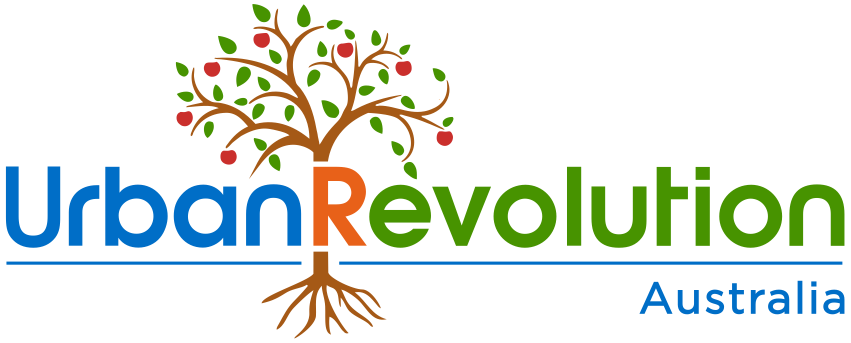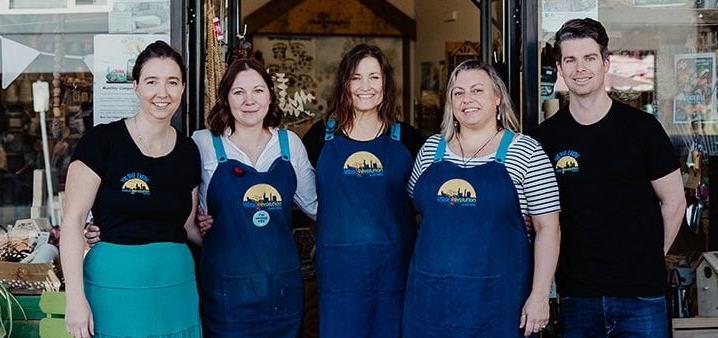Op-shops, charities and other clothing donation programs are an awesome way to give your old clothes a second (or third, or fourth) life, but what to do with clothes or fabrics that aren't suitable for reuse? Perhaps they're stained, torn, stretched, or damaged in some way. Here are some awesome resources to prevent your old textiles from ending up in landfill.
Every single kilogram of textiles that you save from landfill by passing on for reuse, repurposing or recycling prevents 3-4 kg of greenhouse gas emissions from polluting our atmosphere.
Note: many charities and some recycling programs are paused during the CoronaVirus pandemic. If you use this time at home to declutter, please keep these recycling avenues in mind and hold onto your worn clothes for recycling when programs re-open!
How To Recycle Worn Textiles In Australia
We'll go into the WHY we need to recycle old textiles below, but here are some tips for HOW to sustainably dispose of clothing that's at the end of it's life and isn't suitable for donation or reuse. These ideas, resources, and organisations can help you do the right thing with your damaged clothing and textiles.
1. Upcycle! Use it in a craft or DIY project
There are lots of ideas on social media and YouTube for turning old clothing into useful items around the house. Turn old T-shirts into pot-plant hangers or 'no-sew bags', turn old jeans into pillowcases or quilts and turn cotton fabric into beeswax wraps. Furoshiki is the Japanese art of using fabric to wrap parcels, and there are many different techniques for wrapping and tying gifts beautifully. There are also some amazing ideas out there for how to upcycle old fabrics, from old clothes to old curtains, tea towels and bed sheets.
2. See if someone else has a use for it
Wonderful neighbourhood groups like local Buy Nothing Facebook groups encourage recycling and community sharing through gifting unwanted items to your neighbours. Perhaps someone in your community has a use for old fabrics or has a craft project for which they need materials.
You can also check with your local Boomerang Bags group to see if they can use your old textiles. These Aussie grassroots community upcycling programs turn donated fabrics into reusable shopping bags for the local community.
Boomerang Bags is about connecting communities, making bags, diverting waste, starting conversations, fostering sustainable behaviour, and having a bit of fun! We love it!
3. See if you can compost it
Check what your garment is made from. If it's 100% organic materials, then these can be added to your backyard compost pile as a carbon-rich input. Or, find somewhere local to compost it through ShareWaste.
Natural fabrics that can be composted include cotton, wool, silk, cashmere, hemp, bamboo and linen.
4. Check out the Upparel recycling program
In 2019 Manrags launched the world’s first sock recycling initiative to help reduce the 501,000 tonnes of textiles that were being dumped into Australian landfills annually. In just 5 months they diverted over 13,000 kg of socks from landfill.
After their success with socks, they rebranded to become Upparel and now recycle a wide range of clothing items, including shoes. They accept old or damaged items.
Upparel have partnered with charity organisations like Good360 and Ready Set (formerly Wear for Success) to send all items in a reusable condition to people who need them most. Everything else is repurposed or recycled: items like jeans can be turned into new items like tote bags and aprons, and any items that are damaged are recycled to create new yarn or shredded for things like insulation or pet bed stuffing.
The collection and recycling process does cost Upparel a significant amount and hence there is a collection cost of $25 for the pickup of 10 kg clothing and shoes, BUT they give this back to you in the form of credit to spend in their online store, supporting their circular fashion framework.
5. Fashion retailer recycling
Fashion giants H&M and Zara both have garment collection programs in all of their Australian stores. They accept all clothing - any brand in any condition - which they either donate to charities (if it's in good condition) or send to a fabric fibre recycler to create new fabrics and products such as insulation for cars and the construction industry.
Retailer Sheridan also accepts pre-loved sheets and towels (any brand) at their Australian stores.
6. Animal shelters and veterinary clinics
Many animal shelters and vets around Australia appreciate the donation of used bedding, blankets and towels. Note that many can't accept pillows or doonas for health and safety reasons.
7. Rags for mechanics
Old towels, clothes, bedding and other textiles are often appreciated by mechanics who can use them as rags.

Why We Need To Recycle Textiles
Almost 100% of textiles are recyclable, yet less than 15% of discarded textiles are recovered in Australia - we send up to 88% of discarded clothing to landfill. The Australian Bureau of Statistics indicated that 501,000 tonnes of leather and textiles were sent to landfill between 2009-2010, and these figures have only grown as the fast fashion industry has evolved. It is horrifying to think that all these valuable materials are being wasted by being sent to landfill, especially when two thirds of today's textiles are synthetic (derived from petroleum) and may never break down.
Garments today are being worn much less and discarded much quicker than ever before. If you haven't heard of 'Fast Fashion' before, here are some quick facts to bring you up to speed:
- Australians are the world's second largest fashion consumers, buying an average of 27kg of textiles per person each year and then discarding 23kg into landfill - ABC
- “Globally, we now consume about 80 billion new pieces of clothing every year - 400% more than we were consuming just two decades ago” - University of Queensland
- "Nearly 70 million barrels of oil are used each year to make the world’s polyester fibre, which is now the most commonly used fibre in our clothing." - Forbes
- “Fast fashion companies design clothes that fall apart quickly. They pursue a strategy called ‘planned obsolescence’. This means to design garments to become unfashionable, wear out, lose shape or fall to pieces easily to force consumers to keep buying new clothes.” - Be Global Fashion Network
- “We are increasingly disconnected from the people who make our clothing as 97% of items are now made overseas. There are roughly 40 million garment workers in the world today, many of whom do not share the same rights or protections that many people in the West do. They are some of the lowest paid workers in the world" - The True Coast
There is a huge 'Slow Fashion' movement emerging as more people learn of the disgusting statistics behind fast fashion and it's global impact. The Slow Fashion movement encourages people to be more conscious of what they wear: Is it new? What is it made from? Where did it come from? Who made it? Will I wear this garment more than 30 times? This movement encourages second-hand buying and/or choosing to support ethical & sustainable clothing brands as much as possible, and choosing to only buy clothing that you know you need, will love, and will get lots of use out of!

Image from Chasing Unicorns of Zoe Gameau in her One Green Dress
"Zoe has made a stand against “wear once” fast fashion by initiating the ONE GREEN DRESS movement, a concept that advocates and celebrates the repeated wear of the clothing we already own."
References and Further Reading
https://www.ethicalconsumer.org/fashion-clothing/what-fast-fashion-why-it-problem
https://textilebeat.com/aussies-send-85-of-textiles-to-landfill/
https://www.textileworld.com/textile-world/fiber-world/2015/02/man-made-fibers-continue-to-grow/
https://truecostmovie.com/learn-more/human-rights/
https://www.1millionwomen.com.au/blog/how-compost-fabrics/
https://recyclingnearyou.com.au/clothing
http://australianclothingrecyclers.com.au/what-we-do/







Goat The Label
August 07, 2022
Great article, we really need to get climate conscious now before it’s too late.